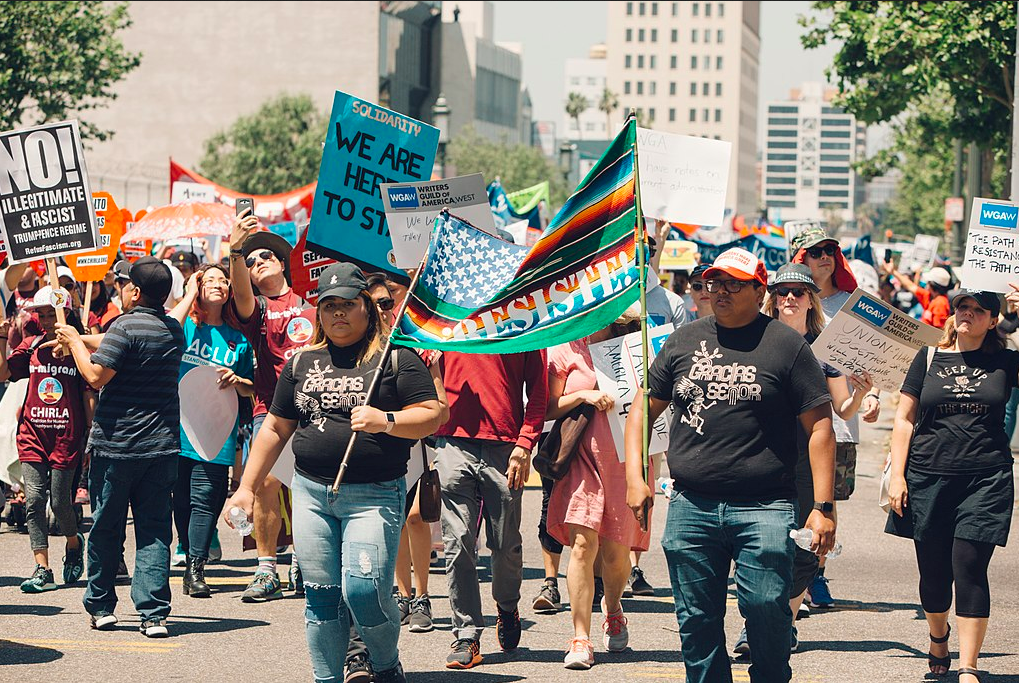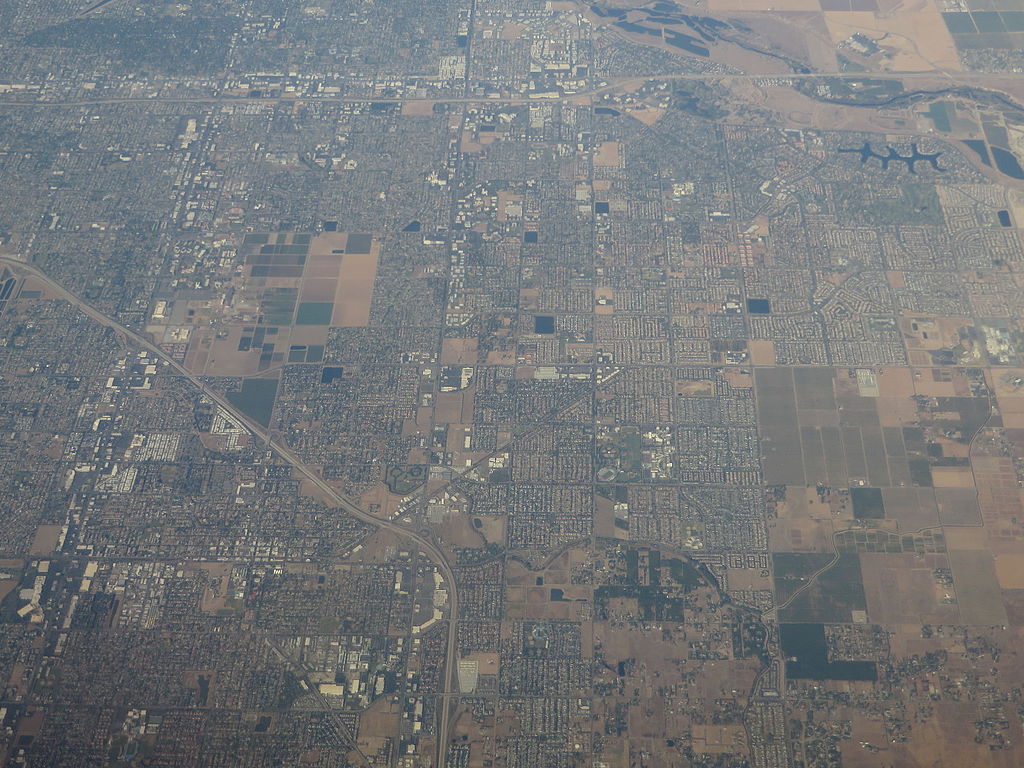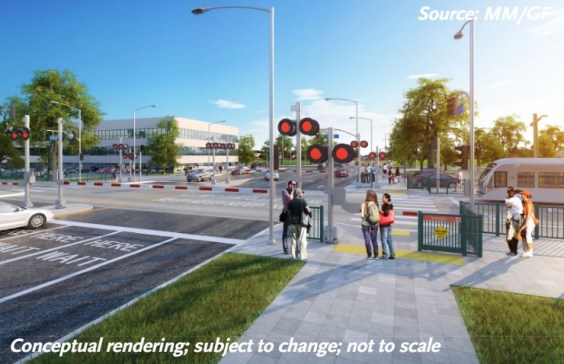One of the most important strategies for ensuring a population is safe and healthy is making sure they have housing, whether a pandemic is threatening or not. California had been failing on that score, for myriad reasons, long before the coronavirus entered the picture and thousands of people lost jobs and income. A quick patchwork of emergency rules has held off immediate danger in the form of evictions, for the moment. But according to a study just released by the UCLA Luskin Center, those protections are no better than a spider web holding back what will be a dam-breaking flood of evictions once they are lifted.
Many of those people will join the already burgeoning numbers of unsheltered people living on the streets and crowded into whatever safety they can find in the homes of family members and acquaintances who are themselves likely to be under pressure from lost and unstable income.
UD Day: Impending Evictions and Homelessness in Los Angeles focuses on L.A., which has the the second highest percentage of renters in the United States, but it is relevant statewide. "UD" refers to "unlawful detainer," which is the most common method used to evict tenants for nonpayment of rent. Emergency regulations currently make it illegal to serve a summons for an unlawful detainer action, but those could be lifted at any time.
Hundreds of thousands of Los Angeles renters are at risk of quick eviction once that happens, unless the state, cities, and counties take other protective measures. The report's author estimates that at least 365,000 households in Los Angeles are likely to be unable to pay their rent because they have lost jobs and have no access to income assistance such as unemployment insurance. These include families with an estimated 558,000 children.
Notably, the people most at risk of eviction are the same people who confront other overwhelming structural problems in our society, including racist policies and practices that are being protested throughout the country right now: poor and low-income Black and brown people. These are the people who are already paying a high portion of their income on rent - some as high as ninety percent - and have few resources to fall back on when they lose their jobs.
Before COVID shutdowns, many of them were already living on the edge, barely able to pay rising rents even though they were working full-time, or more, earning wages that have not risen with rents.
"Unlawful detainer" evictions can happen very quickly, and unless a tenant understands all of the requirements for appeal - which include filling out several forms in specific ways, paying a fee of $240, and having someone else mail in the form and sign an affidavit saying they did so - and complies with them within five days, they can be forcibly removed from their home. Many of these renters lack the connections, the knowledge, the language, the equipment (a computer to download and a printer to print out a form), or the support they need to do so.
And they would just be the first wave of evictions. Once COVID-related income assistance programs end, writes Gary Blasi, the report's author, there is likely to be a second wave. "It is certainly possible that second wave will be much larger than the first, given that two-thirds of unemployed workers are now entirely dependent on [unemployment insurance] payments," he writes.
The one unknown right now is when the emergency protections will be lifted, but it could happen any time.
"No one can say when the tsunami of evictions will arrive," writes Blasi. "We can say that it is coming."
Allowing hundreds of thousands of people to be evicted is not in the interests of public health and safety, not to mention the health and safety of the individuals themselves.
Policies that truly address the basic human right to housing and shelter won't be easy or cheap, and they certainly won't be uncontroversial. Small landlords tend to see them as attacks on their property; large landlords have resources to argue against them in legislatures and courts.
But "whatever the costs of reducing both eviction and homelessness are, however measured, they are far less than the costs of allowing families and children to lose their homes," notes Blasi.
"Keeping tenants in their homes would be a wise public policy choice, especially in a renter-majority city such as Los Angeles," he writes.
Blasi offers a start for thinking about solutions, including planning now to shelter people who will lose their housing. Also necessary will be reducing the potential number of evictions by canceling rent or expanding rental assistance payments, which would require expansion of the CARES Act beyond its current expiration date in July.
At the state level, Senate Democrats have floated proposals to pay landlords "the equivalent of the rent due, in the form of transferable tax credits, the value of which would be paid off without interest by tenants over ten years beginning in 2024."
"Over a longer term, the only way to decrease non-payment evictions is to (a) impose much stricter rent controls"- a repeal of the Costa Hawkins restrictions on rent control will be on the November ballot - "or (b) to address the very important but often ignored income component of the “affordable housing” problem." That is, housing isn't affordable not because people aren't working but because wages are too low (rents are too high). Raising the minimum wage and/or creating public employment programs along the lines of the WPA would be two potential ways to address that.
Tenants also need access to legal assistance to protect themselves. "Even if they know their basic rights, in the real world of technical paperwork and courthouse procedures, virtually all tenants without access to legal help lose," according to Blasi's findings. "In a study of a random sample of 151 unlawful detainer cases in the Los Angeles Superior Court, not one tenant prevailed without a lawyer to represent them," he writes.
Plans also must be made now for quickly rehousing people who are evicted. "Given the scale of the impending crisis and the realities of funding and politics, even if all of the above responses are fully funded and successfully implemented, it is certain that we will see a very large increase in the number of unhoused people and families," writes Blasi.
Another painful twist is that "the newly homeless economic refugees from the current crisis will include many families with children. Many will receive aid from welfare programs like CalWorks, but a great many will not."
"It is unthinkable that Los Angeles will leave them on the streets, as it has long left 75 percent of those unhoused before the pandemic. But the unthinkable has a way of becoming reality unless there is planning and commitment on the necessary scale." [Emphasis added.]
Blasi concludes with a warning:
Unless we take immediate action now to either prevent or prepare for the coming waves of eviction, the toll on those evicted will go beyond the damaging effects, especially for nearly a half million children, of forced displacement itself. That toll is largely invisible, if no less painful.
The much more visible and more painful toll will be seen in the massive increase in the numbers of Angelenos who lack both housing and shelter and are forced to fend for themselves.... No one needed a statistic to know that homelessness in Los Angeles last year was already a humanitarian crisis. It is now past time to prepare for the fact that the housing and homelessness crisis is about to deepen to a level never before seen in any urban area in the industrialized world.
A grossly disproportionate number of the newly homeless in Los Angeles will be low income people of color. And if the only options the unhoused are given are refugee camps or the streets, no one should be expected to peacefully tolerate such a result, nor to forgive those who did little to stop it.
The unrest on the streets in our cities today, in L.A. and elsewhere, is a direct and unsurprising outcome of racist societal structures, from redlining to disinvestment to over-policing to land use and transportation planning, that some of us - though not all - are beginning to see clearly for the first time. Californians who are coming to a new understanding of the importance of speaking up for the Black and brown people our society has exploited throughout its history need to make the connections, now, to housing disparities and tenants rights, and understand their role in perpetrating these disparities by doing and saying nothing.
That feeling you may have when you read this report and think: "This is terrible, thank god it won't affect me"? That's part of the problem. The first step is to recognize that.
Los Angeles - and California - cannot afford to ignore this.





